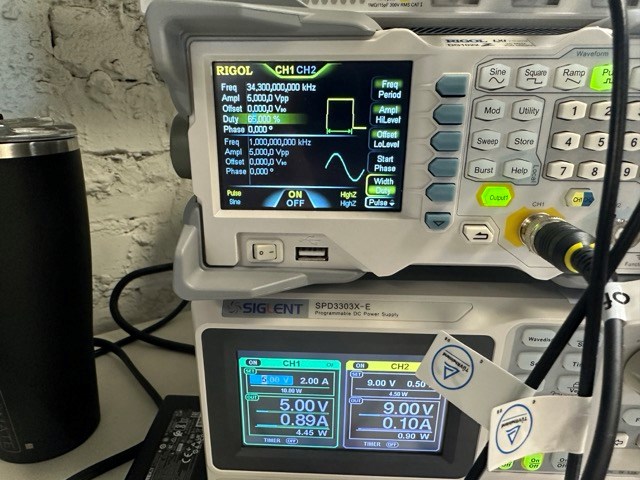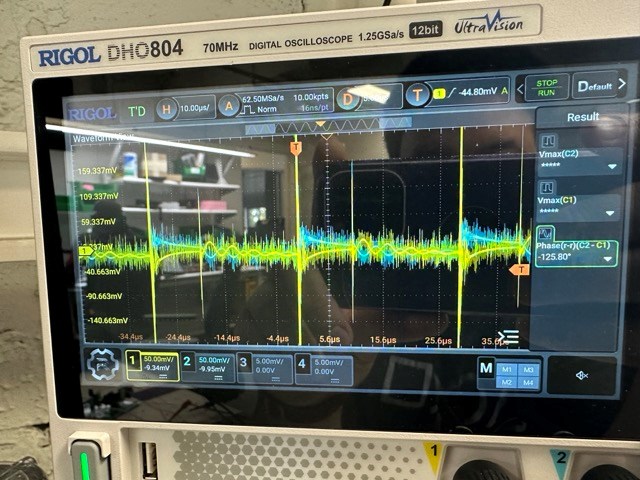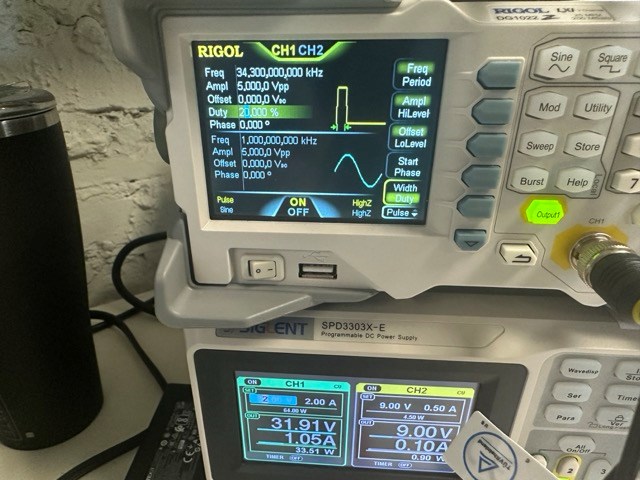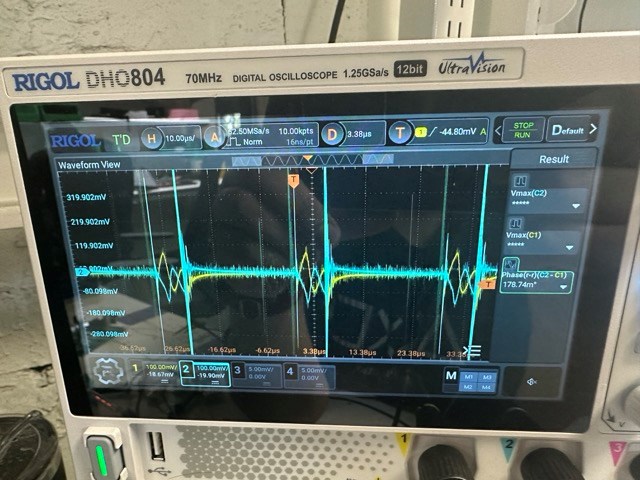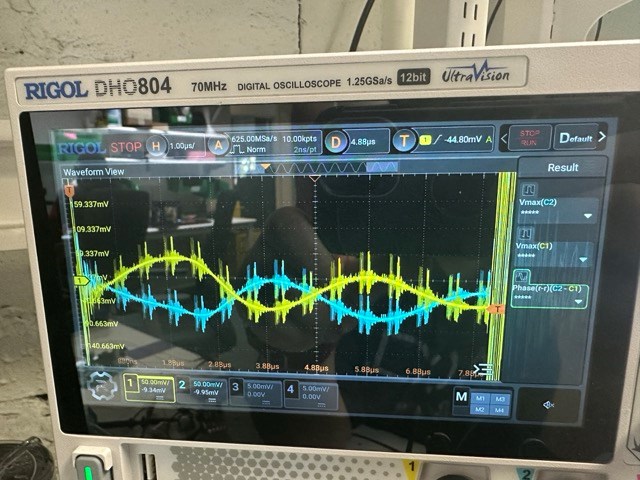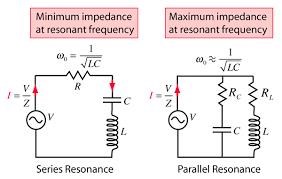Hi all,
I believe I have succeeded in replicating the Mr. Preva Experiment,
Here is my coil, it has 7 turns on one side and 17 turns on the other,
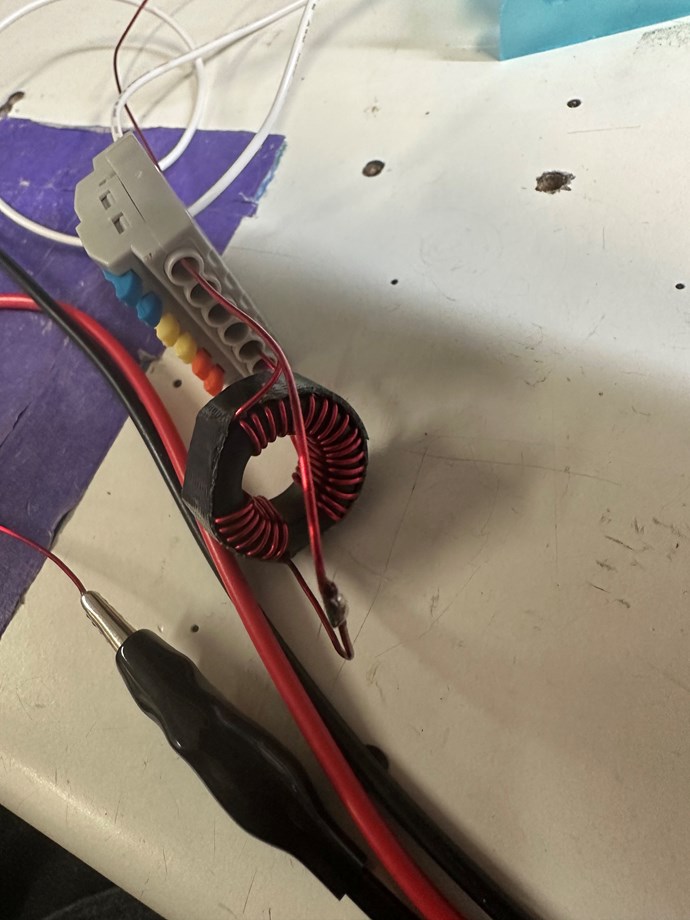
And here is the entire setup, I have it setup almost exactly how Preva's circuit looks,
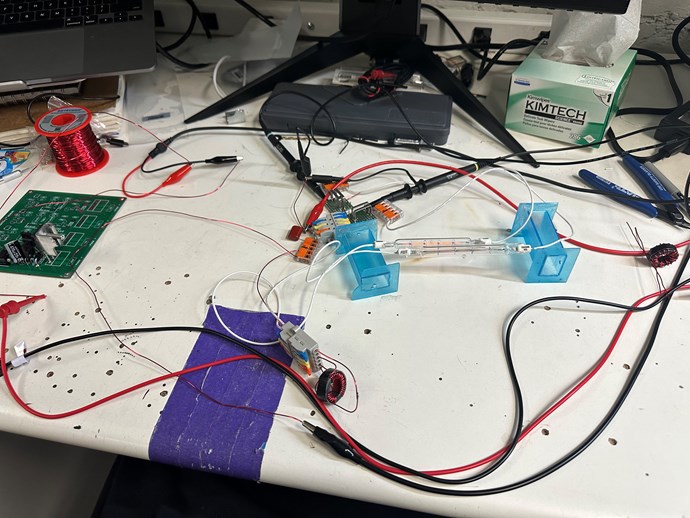 \
\
Here is the power supply and the function generator, as well as the O-scope but I don't know if the scope is correct,
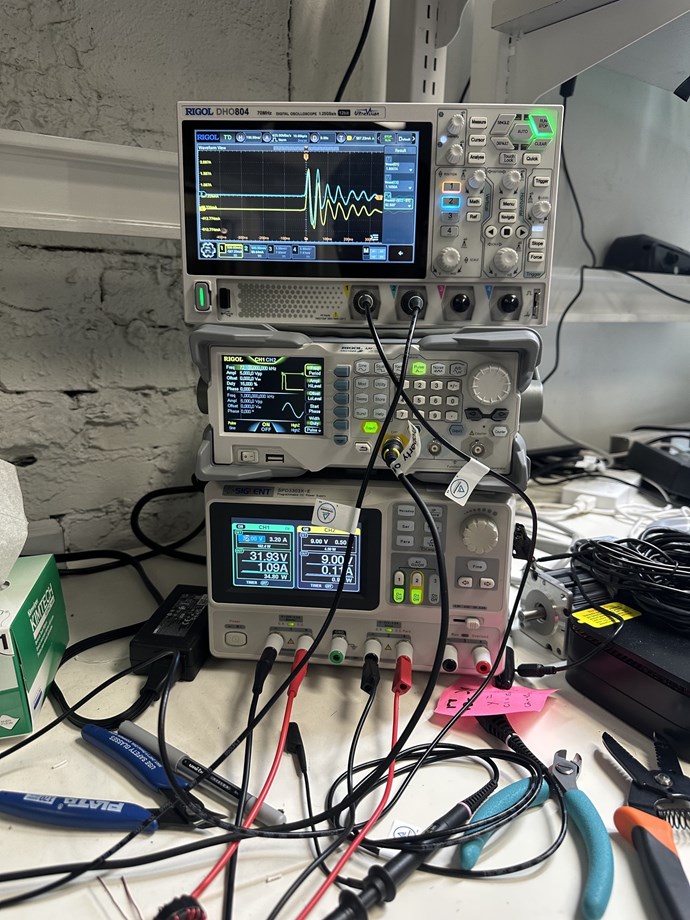
It's hard to see in this image but the frequency is set to a pulse generator at 72.1kHz, and the duty cycle is set to 15%.
The readings I have on my O-Scope, again I am not sure if they are correct, but the yellow line is going to the 7 turn coil, and the blue line is going to the 17 turn coil, the yellow channel is reading 1.8A V(max), and the blue channel is reading 1.1A V(max), and the Phase Shift is 52deg however it was floating and flipping between 40 - 100 degrees, I am not too sure if I am making the right readings so please DM me and I can make different readings and I'll post it.
Besides me making potentially incorrect readings, here is the loads with the brighter bulb being connected to the yellow probe and the 7 turn coil.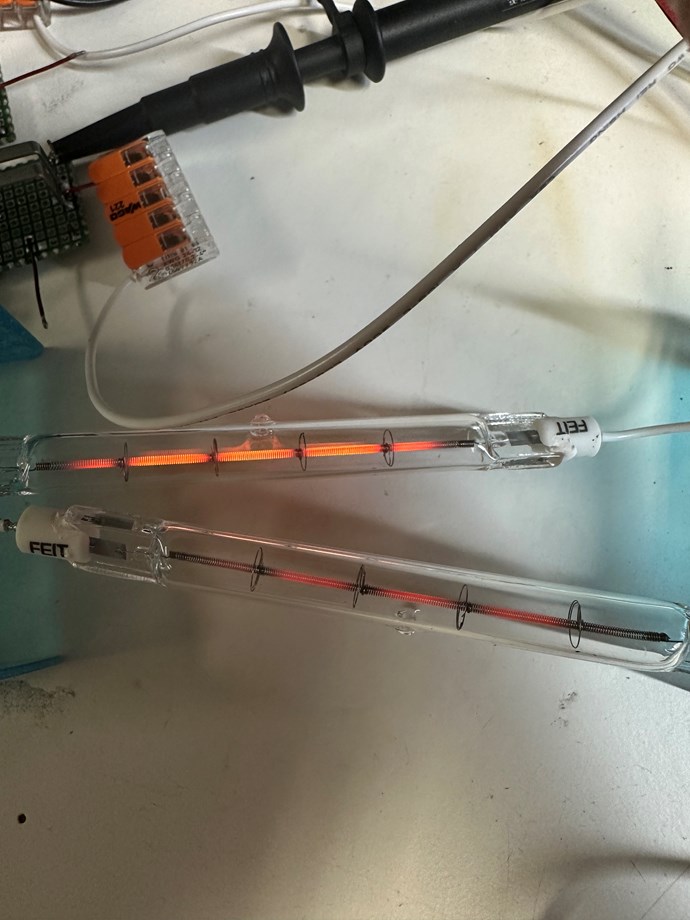
These Bulbs are 500W 120V rated at 8500 lumens.
I found that the phenomena of one bulb being brighter than the other happened at 36kHz and 72kHz and when I went above or below those frequencies the bulbs would dim and be off completely at a certain point above or below, the higher I made the frequency above the 72kHz the dimmer it became, and the bulbs would not be on even well in to the 100kHz range.
Please let me know what I can do to get the same readings everyone else is getting on their scopes without me having to purchase current probes.







